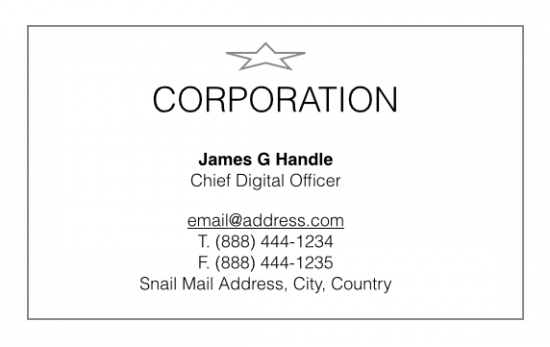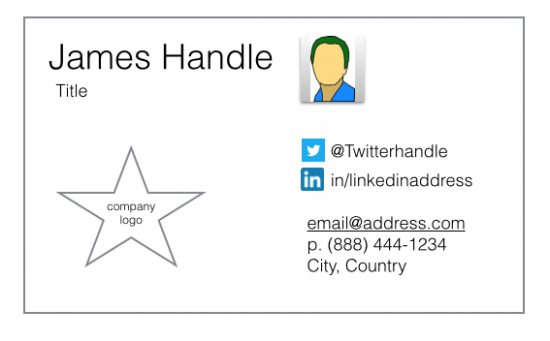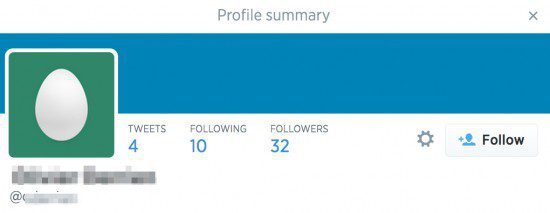I sometimes marvel at how the business card remains so prevalent in this digitally connected world. The are numerous ways to create and exchange virtual digital cards, via specific apps (e.g. Qikshare), emails with an attached VCF or an aggregated service (e.g. about.me), social networks and various types of dongles. Yet, the business card’s resilience shows just how much the IRL meeting maintains its importance.
Nonetheless, in today’s hyper digital world, the valiant business card needs to evolve. Too many corporate communications teams seem to be asleep at the wheel! Just as you can “read” into a company’s culture and strategy when delving into an annual report, I am increasingly inclined to say that you can understand the digitality (even the Digital IQ) of a company by looking at the business card.
So, what does a business card say about the digital-readiness of the company (not to mention the individual featured on the card)? Looking at a slew of business cards I recently collected, I found that there are basically two varieties of errors: too much or too little digitality.
The low Digital IQ business card
These days, the vast majority of C-suites have made “digital transformation” a priority for the organization. Especially for those companies that existed well before the Internet revolution, their legacy systems and mindset become flagrantly exposed where their business cards are concerned. A legacy of the pre-digital era, for these older companies, the business card can reveal some archaic leftovers. Companies have been spawning Chief Digital Officers at record levels. However, it becomes utterly surprising to find persons with such titles handing out business cards that might still very well include a fax number. {No joking, I have seen such}

The wannabe high Digital IQ business card
The second category of error I see is where the “Digital IQ” is oversold. The challenge with putting up one’s social media presence, for example, is whether or not the published Digital IQ is up to par with the “marketing” on hand. I know that it is an evolving space, but one needs to be prescient about the message that is being presented. I found one top executive at a very savvy company selling a 100% digital solution, where the company’s website (www.) was not even listed (except at the end of the @address.com email). Perhaps, that’s ok, but I feel it’s a bit cheeky — and I certainly imagine that it was an oversight. See below for a representation the above-mentioned business card.

Moreover, when visiting the Twitter account of this supposedly savvy top executive, it was rather confounding to come across the egghead profile (read here about the 7 archetypes of Twitter profiles)! There’s a photo on the business card; yet there is no image on the Twitter account that is proudly displayed under the photo on the business card. I also find it rather suspicious when a Chief Digital Officer doesn’t hand out his/her mobile number. Perhaps they are overly taxed? As far as I am concerned, I believe the “p” should be an “m.”

The problem with the digital world is that everything becomes remarkably “available” and visible. Consistency is only powerful when it is matched with congruency. {Tweet this} And, a digitally-focused company ought to know better than to promote an egghead. Meanwhile, the more traditional companies need to do more to bring the digital presence into their IRL existence, especially when the person has digital responsibility. I’m not saying they necessarily need to integrate QR codes (though, why not?), but brands should be looking to integrate digital into their physical world — even when it comes to business cards.
Your thoughts and reactions?











For how long will QR codes survive? Seems like they have been replaced by #hashtags now on most ads… jumping from one hype to another 🙂
When OCR apps start reading website addresses with the speed and accuracy of QR codes, then I think the need for QR codes reduces for this “marketing” info. Press releases this week show these Apps are starting to come out – you can download VisuCaller for calling phone numbers for free (VisuSurfer and VisuMapper also exist). Also recall Amazon Firefly new a week ago – “… recognizing printed text …”. QR codes are mystical to people – printed text is not and is more natural.